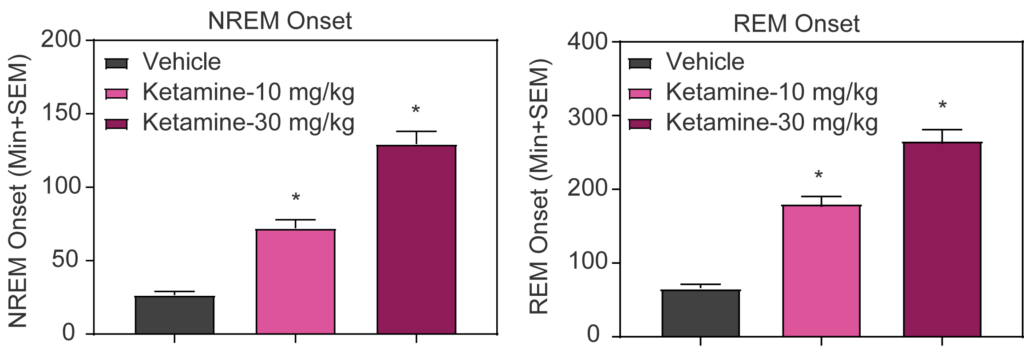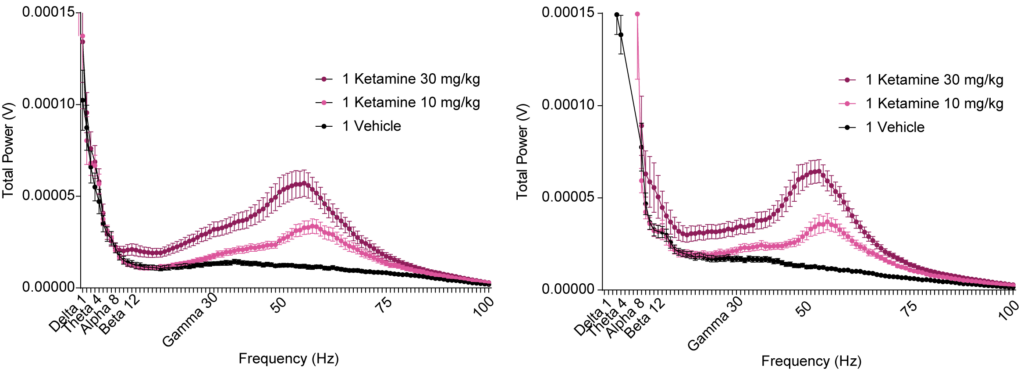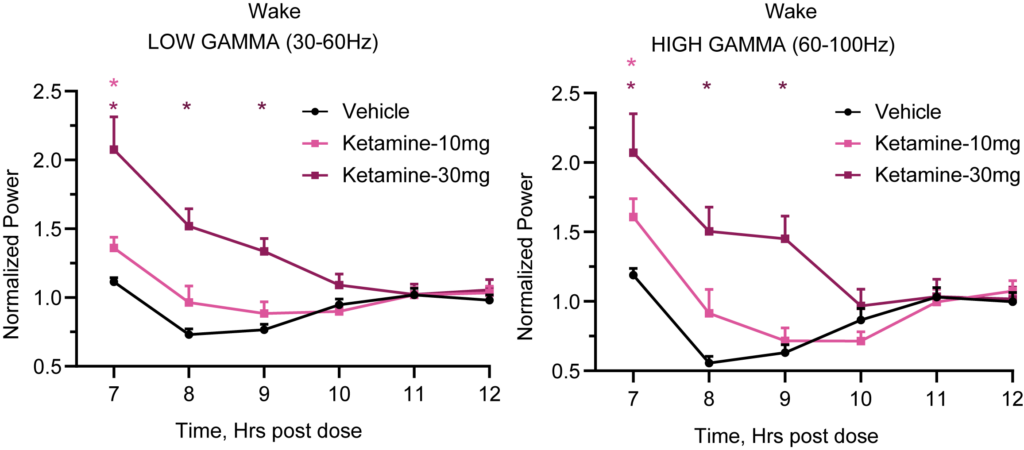Thorough analyses of Electroencephalography (EEG) following pharmacological or genetic manipulations requires careful determination of sleep/wake profiles. EEG power is significantly different during normal waking compared to normal non-rapid eye movement (NREM) and rapid eye movement (REM) sleep. Psychogenics provides a full characterization of EEG patterns, which includes sleep/wake analyses, careful artifact removal for high-quality power analyses, spectral power density analyses within each sleep/wake state, and a characterization of any aberrant EEG waveforms. These careful analyses provides the best opportunity for finding EEG biomarkers that are translational to the clinic.

Effects of ketamine on the latency to the onset of NREM and REM sleep. Rats were administered ketamine (10 and 30 mg/kg), 3 hours into the light phase (ZT3). Ketamine increased the onset to both NREM and REM in a dose-related manner.

Time course for percent time in sleep/wake states in rats following ketamine injection at ZT3. The white plot denotes the light phase and the gray plot the dark phase of the 24 hours. The wake-promoting effects are relatively short, ~2-3 hours, but the REM suppression lasts for up to 6 hours with signs of rebound REM in the subsequent dark phase.

Raw EEG power spectra recorded from Frontal (left) or Parietal (right) cortex during the first 30 minutes after ketamine injection. Note the dose-related increase in gamma power (30-100 Hz) during waking.

Low gamma (30-60 Hz; Left) and high gamma (60-100 Hz; Right) power following ketamine injection. Both frequency domains show an increase in power during waking compared to vehicle control.